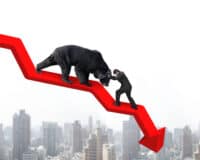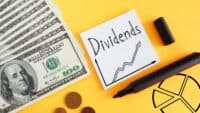 Back in the liquidity bubble, corporate bond spreads were tight. Very tight. Sometimes as little as 50 or 75 basis points for those deemed a solid investment grade, and sometimes even tighter than that. The credit crunch and then the financial meltdown changed all that, probably for years and years. Goldman Sachs Group Inc. (NYSE: GS) is generally deemed as solid credit worthiness, but now ‘generally’ is a term that cannot apply. Goldman Sachs is issuing 10-Year notes of about $1.25 billion. Investors lending to the firm are getting a 6% coupon, and the spread is either 275 or 280 basis points above the existing 10-Year Treasury note.
Back in the liquidity bubble, corporate bond spreads were tight. Very tight. Sometimes as little as 50 or 75 basis points for those deemed a solid investment grade, and sometimes even tighter than that. The credit crunch and then the financial meltdown changed all that, probably for years and years. Goldman Sachs Group Inc. (NYSE: GS) is generally deemed as solid credit worthiness, but now ‘generally’ is a term that cannot apply. Goldman Sachs is issuing 10-Year notes of about $1.25 billion. Investors lending to the firm are getting a 6% coupon, and the spread is either 275 or 280 basis points above the existing 10-Year Treasury note.
We are awaiting final confirmation of the deal’s spread pricing, but this will result in a yield of a hair over 6.00% for that 6.00% coupon if it is at the 280 basis points we are now being told about from a broker familiar with the matter. What is interesting is that spreads are much wider than even a month ago. MarketWatch recorded a snapshot of a Goldman Sachs debt spread on a 10-Year note as recently as April 19 having widened by 23 basis points up to a new higher spread of 182 basis points. Here we are today with several corporations trying to price offerings and Goldman Sachs is paying 100 basis points higher than 40 days ago.
On last look, S&P and Moody’s, being the great bond ratings agencies that they are, had variations of “A” ratings for Goldman Sachs. That is still well above the line of falling under the “BBB” or “Baa” point of no return that gets into junk status. When you have a 280 point spread with an A-rated issuer, even if it is the controversial firm of Goldman Sachs, imagine how high the spreads will now have to be for Junk Bonds.
This is very expensive borrowing for the firm, at least for now. Unfortunately (or fortunately) this is also not the most expensive financing it has issued. When it secured the Warren Buffett investment during the 2008 crash, it paid 10% for preferred shares that also came with warrants attached. Even with all the woes of Europe and its political backlash and public image bashing of today the rate is far better than at the extremes.
Despite the current woes of Goldman Sachs, it is still deemed better credit worthiness compared to some of its peers. It is certainly more profitable in trading, and that gives it more to lose versus some peers who may have less leverage. Still, this will only create higher borrowing costs for its banking and brokerage firm peers.
JON C. OGG
Take Charge of Your Retirement In Just A Few Minutes (Sponsor)
Retirement planning doesn’t have to feel overwhelming. The key is finding expert guidance—and SmartAsset’s simple quiz makes it easier than ever for you to connect with a vetted financial advisor.
Here’s how it works:
- Answer a Few Simple Questions. Tell us a bit about your goals and preferences—it only takes a few minutes!
- Get Matched with Vetted Advisors Our smart tool matches you with up to three pre-screened, vetted advisors who serve your area and are held to a fiduciary standard to act in your best interests. Click here to begin
- Choose Your Fit Review their profiles, schedule an introductory call (or meet in person), and select the advisor who feel is right for you.
Why wait? Start building the retirement you’ve always dreamed of. Click here to get started today!
Thank you for reading! Have some feedback for us?
Contact the 24/7 Wall St. editorial team.





